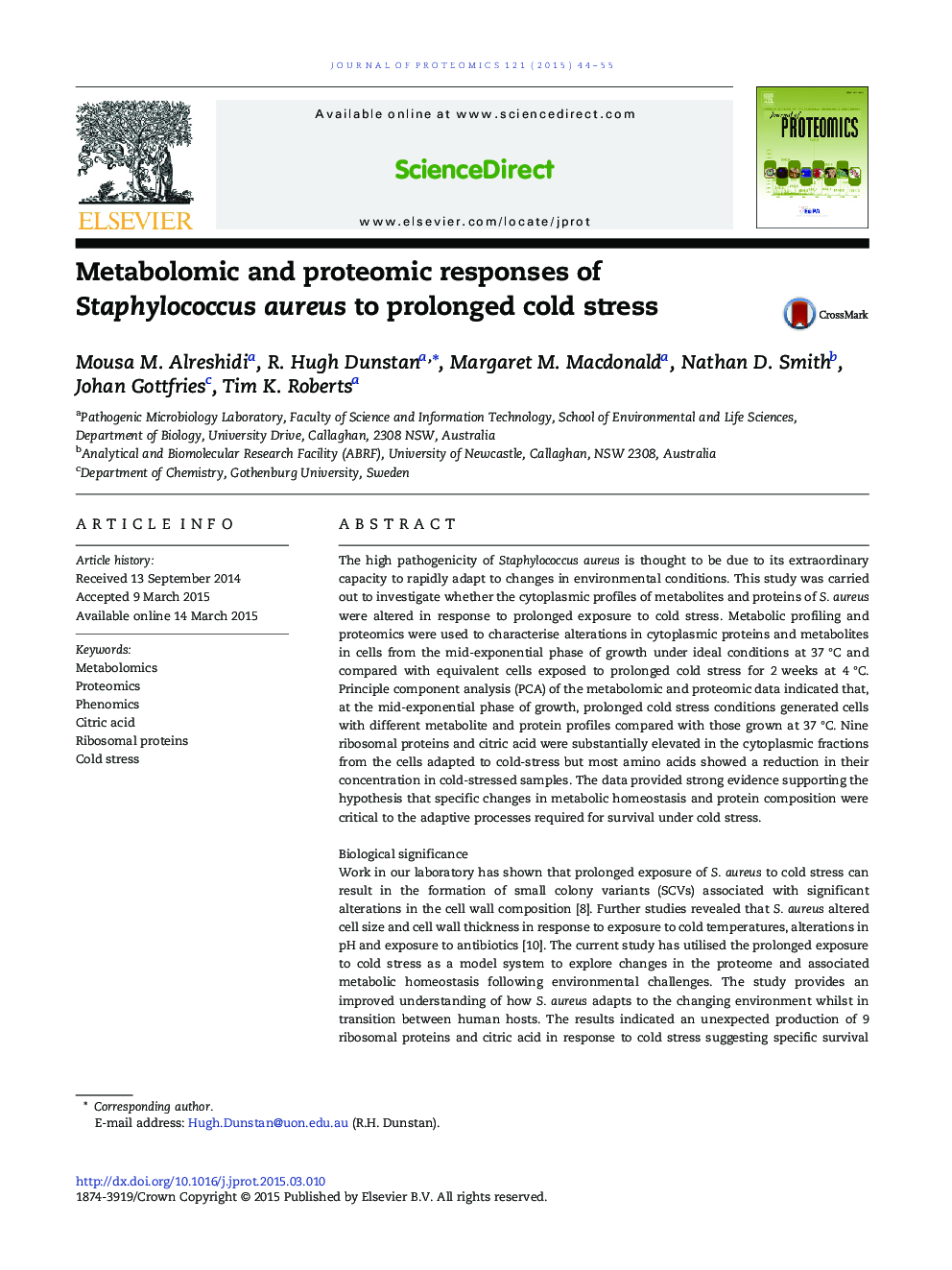| کد مقاله | کد نشریه | سال انتشار | مقاله انگلیسی | نسخه تمام متن |
|---|---|---|---|---|
| 1225427 | 1494759 | 2015 | 12 صفحه PDF | دانلود رایگان |
• 9 ribosomal proteins were substantially increased in cold stressed samples independent of other ribosomal proteins.
• Citric acid was virtually absent in control cells and present as a major cytoplasmic component in the cold-stressed samples.
• Fifteen amino acids were significantly reduced and four were significantly increased in the cold stressed samples.
The high pathogenicity of Staphylococcus aureus is thought to be due to its extraordinary capacity to rapidly adapt to changes in environmental conditions. This study was carried out to investigate whether the cytoplasmic profiles of metabolites and proteins of S. aureus were altered in response to prolonged exposure to cold stress. Metabolic profiling and proteomics were used to characterise alterations in cytoplasmic proteins and metabolites in cells from the mid-exponential phase of growth under ideal conditions at 37 °C and compared with equivalent cells exposed to prolonged cold stress for 2 weeks at 4 °C. Principle component analysis (PCA) of the metabolomic and proteomic data indicated that, at the mid-exponential phase of growth, prolonged cold stress conditions generated cells with different metabolite and protein profiles compared with those grown at 37 °C. Nine ribosomal proteins and citric acid were substantially elevated in the cytoplasmic fractions from the cells adapted to cold-stress but most amino acids showed a reduction in their concentration in cold-stressed samples. The data provided strong evidence supporting the hypothesis that specific changes in metabolic homeostasis and protein composition were critical to the adaptive processes required for survival under cold stress.Biological significanceWork in our laboratory has shown that prolonged exposure of S. aureus to cold stress can result in the formation of small colony variants (SCVs) associated with significant alterations in the cell wall composition [8]. Further studies revealed that S. aureus altered cell size and cell wall thickness in response to exposure to cold temperatures, alterations in pH and exposure to antibiotics [10]. The current study has utilised the prolonged exposure to cold stress as a model system to explore changes in the proteome and associated metabolic homeostasis following environmental challenges. The study provides an improved understanding of how S. aureus adapts to the changing environment whilst in transition between human hosts. The results indicated an unexpected production of 9 ribosomal proteins and citric acid in response to cold stress suggesting specific survival roles for these proteins and citric acid as an adaptation mechanism for empowering survival under these conditions.
Figure optionsDownload high-quality image (196 K)Download as PowerPoint slide
Journal: Journal of Proteomics - Volume 121, 21 May 2015, Pages 44–55
